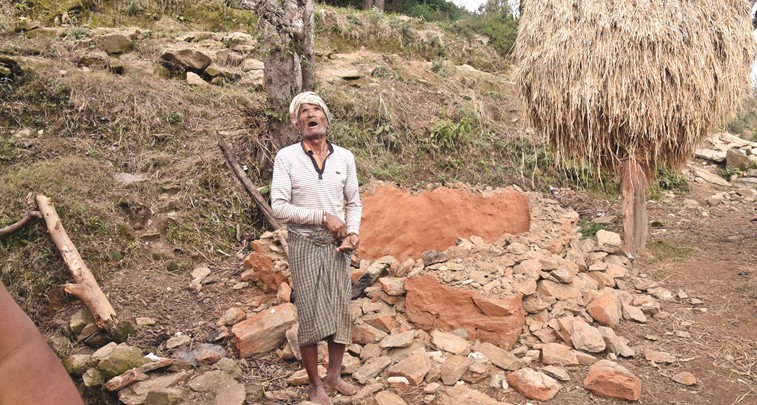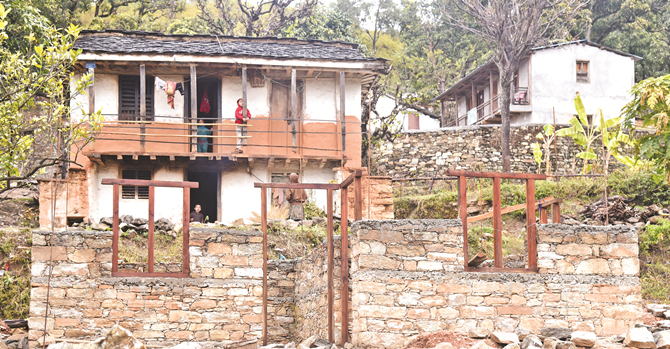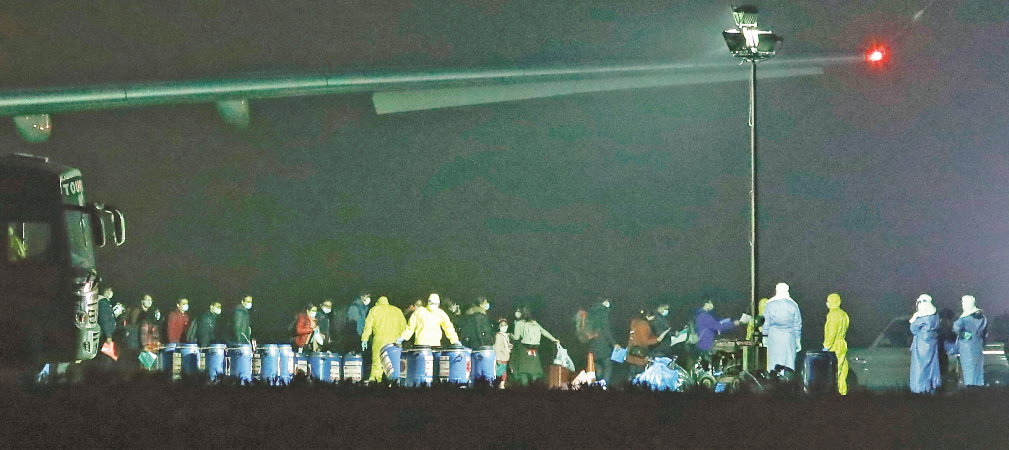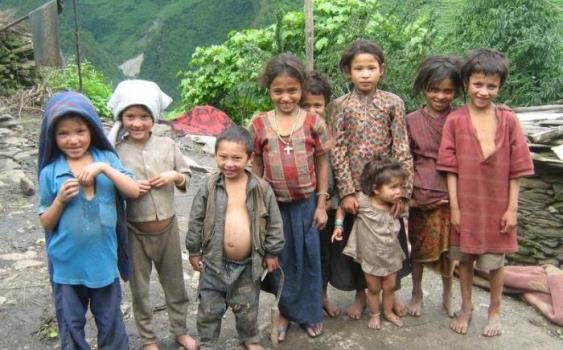When mothers are ignorant or busy, babies suffer malnutrition
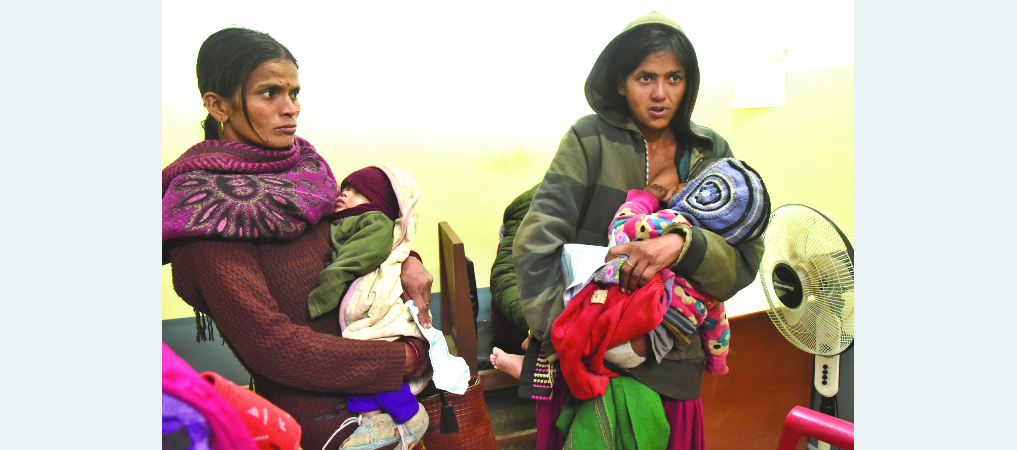
By Ajita Rijal
Dadeldhura, Feb. 13: A one-and-a-half years old baby girl from Anarkholi was diagnosed with a condition of severe acute malnutrition (SAM) by a local health post in Anarkholi, Baitadi district.
The post’s health workers referred the baby’s mother, Rajeshwori Chand, 20, to visit the Nutritional Rehabilitation Home (NRH) facility at the Dadeldhura Sub-Regional Hospital.
Malnourished children (as well as mothers) are admitted and provided with nutritional food for a period as while mothers are educated and counseled on the importance of nutrition at the hospital.
During pregnancy, Chand herself had suffered from anemia and as a result she couldn’t breast feed the newborn.
Chand says she knows the importance of nutrition but the daily household chores take the bulk of her time and she is unable to take good care of her baby or feed her properly.
Malnutrition in childhood and pregnancy has many adverse consequences on the child’s survival and long-term well-being.
As per World Health Organization (WHO), SAM is a condition of very low birth weight compared to height and it is a life-threatening condition in children, requiring urgent treatment.
Chand’s version of the reasons for malnutrition in her baby points to ignorance as well as socio-economic problems, including early marriage and gender disparity with disproportionate level of daily work burden on the females in the rural households.
This seems like a common sorry state - narrated by many rural women like Chand. “Since early morning till late at night, I need to do lots of daily household work, so
I can’t pay attention to my baby, and it’s why our babies are not healthy enough.”
Another mother of twins, Rewati Sharki, 22, whose one nine-month old baby weighs only 5.5 kg, was at the NRH for 13 days, “Of my twins, the baby boy is healthy but the baby girl is under weight,” said Sharki.
Carrying her emaciated baby girl in her arms, Sharki said, “I need to do all the household chores and outdoor activities, due to which I never get enough time to take care of my babies and feed them on time, like here.” “My children eat whatever my mother-in-law prepares in the kitchen,” said Sharki. Married at the age of 18, Sharki herself never got enough nutritious food and supplements during and after her pregnancy.
“We never had the idea of eating a balanced diet; we ate anything for the sake of satiating our hunger,” said Sharki.
Not knowing how to eat a balanced diet seems to the real problem, rather than being unable
to afford it. “Luckily, various nutritional high value foods are easily found in the village, in our own farms right in front of most houses, but most mothers who visit the NRH don’t know how to feed those foods available in their own farms,” said Parbati Ojha, an auxiliary nurse midwife (ANM) working at the NRH.
Most villages usually produce abundant organic and nutritious foods including finger millet, barley, wheat, grains, green leafy vegetables and seasonal fruits - papaya, orange, mango. They are all easily available but people seemingly ignore and do not understand the importance of these foods for themselves or their babies, Ojha added.
Another sorry situation is that in some places, as told by locals, women from nearby villages visit the towns with cans of fresh milk early in the morning daily to sell, and they are seen walking back with instant noodles in their hands. This means they are selling the most nutritious milk and eating the junk food.
Another mother, Dambari Oli, 21, had arrived in the NRH from neighbouring Doti district after referral from a local health post. Her one-year-old baby, who was only 6 kg, gained good weight within two weeks. “I never had any idea on how to feed the babies,” said Oli and added, “I will surely manage time to take care of my babies after returning home from here.”
The Dadeldhura Hospital’s NRH has 10 beds where severely malnourished children along with their mothers are admitted for treatment. The nutritionist cook and nurses are present round-the-clock and children are provided food for three to four weeks. After seeing a notable increase in weight, they are discharged, according to ANM Ojha.
“We will follow up to check the weight gain of the children once they are discharged,” she added.
“Children here are fed on a routine, including cereals, pulses, green leafy vegetables, grains, eggs, meat. Seasonal fruits, vegetables and other supplements are provided to the children,” said Puja Chand, Programme Manager at NRH.
“We focus on the development of malnourished children. The NRH accommodates the malnourished children and their parents during the period of recovery. Mothers are also taught about hygiene, way to prepare food by utilising the available local products and to recognise the symptoms of illness in their children,” she added.
According to the UNICEF, child under nutrition rates has substantially declined over the past two decades in Nepal. However, much more needs to be done as malnutrition is still very much prevalent.
According to the 2016 Nepal Demographic Health Survey (NDHS), 36 per cent of children under five years of age in the country suffer from chronic malnutrition (stunting or low height-for-weight) and 10 per cent suffer from acute malnutrition (wasting or low weight-for-height).
Recent News

Do not make expressions casting dout on election: EC
14 Apr, 2022
CM Bhatta says may New Year 2079 BS inspire positive thinking
14 Apr, 2022
Three new cases, 44 recoveries in 24 hours
14 Apr, 2022
689 climbers of 84 teams so far acquire permits for climbing various peaks this spring season
14 Apr, 2022
How the rising cost of living crisis is impacting Nepal
14 Apr, 2022
US military confirms an interstellar meteor collided with Earth
14 Apr, 2022
Valneva Covid vaccine approved for use in UK
14 Apr, 2022
Chair Prachanda highlights need of unity among Maoist, Communist forces
14 Apr, 2022
Ranbir Kapoor and Alia Bhatt: Bollywood toasts star couple on wedding
14 Apr, 2022
President Bhandari confers decorations (Photo Feature)
14 Apr, 2022



